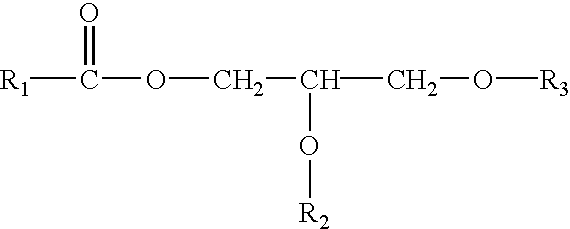Method for quantitating organic peracid using catalase
- Summary
- Abstract
- Description
- Claims
- Application Information
AI Technical Summary
Benefits of technology
Problems solved by technology
Method used
Image
Examples
example ii
Catalase Activity
A. Reagents
1. 0.01M hydrogen peroxide (H.sub.2 O.sub.2), 0.005M phosphate buffer, pH 7.00. This was prepared fresh from 30% H.sub.2 O.sub.2 every day. Heavy metal contamination during preparation was avoided.
2. 13 mg / ml sigma bovine liver catalase (Cat. #C-10). This was prepared fresh daily in distilled water. Catalase was stored on ice prior to use. The catalase was listed as having 1900 units / mg solid where 1 unit decomposes 1.0 .mu.mole of H.sub.2 O.sub.2 per minute at 25.degree. C., while the H.sub.2 O.sub.2 concentration falls from 10.3 to 9.2 .mu.moles / ml in the reaction mixture.
A scanning ultraviolet spectrophotometer (Varian Associates) with constant temperature jackets around the sampling cuvettes was used.
C. Determination of Catalase Activity
Catalase activity was measured via a U.V. assay. This assay follows the decrease in extinction of an H.sub.2 O.sub.2 solution at 240 nanometers wavelength due to decomposition of H.sub.2 O.sub.2 by ca...
example iii
Reaction Between Catalase and Hydrogen Peroxide
In a 40 ppm AO solution of H.sub.2 O.sub.2 at pH 9.0, 21.degree. C., 0.55 .mu.g / ml of catalase is required to decompose half of the active oxygen in 5.2 minutes (See Table I, below; FIG. 1). The A.O. level of the stock peroxide solution (without catalase) at the beginning and end of the experiment was 41 ppm. After 10 minutes incubation with 0.55 .mu.g / ml catalase, the AO dropped to 11 ppm. This was a significant decrease compared to initial AO and was clearly attributable to the catalase addition.
The results of the incubations of peracetic acid and diperoxydodecanedioic acid (DPDDA) with catalase are depicted in Table II. Over a period of ten minutes, 0.55 .mu.g / ml of catalase did not alter the A.O. level of a 40 ppm solution of peracetic acid compared to controls. Even after raising the concentration of catalase to 38 .mu.g / ml and increasing the incubation time to 120 minutes, there was no significant difference between the initial A....
example iv
0.4 ml Sigma C100 catalase / 50 ml aq. sol.=0.008 ml C100 / ml
##EQU4## 0.383 mg protein'46,200 Units / mg protein=17.695 U / ml
##EQU5##
Where U is 1 unit which catalyzes the decomposition of 1 micromole peroxide / minute as the concentration falls between 10.3 to 9.2 micromoles / ml.
In the following Example V, a protocol is demonstrated in which catalase is used as a quenching agent in solutions containing a known amount of previously generated peracid.
PUM
| Property | Measurement | Unit |
|---|---|---|
| Fraction | aaaaa | aaaaa |
| Angle | aaaaa | aaaaa |
| Volume | aaaaa | aaaaa |
Abstract
Description
Claims
Application Information
 Login to View More
Login to View More - R&D
- Intellectual Property
- Life Sciences
- Materials
- Tech Scout
- Unparalleled Data Quality
- Higher Quality Content
- 60% Fewer Hallucinations
Browse by: Latest US Patents, China's latest patents, Technical Efficacy Thesaurus, Application Domain, Technology Topic, Popular Technical Reports.
© 2025 PatSnap. All rights reserved.Legal|Privacy policy|Modern Slavery Act Transparency Statement|Sitemap|About US| Contact US: help@patsnap.com



